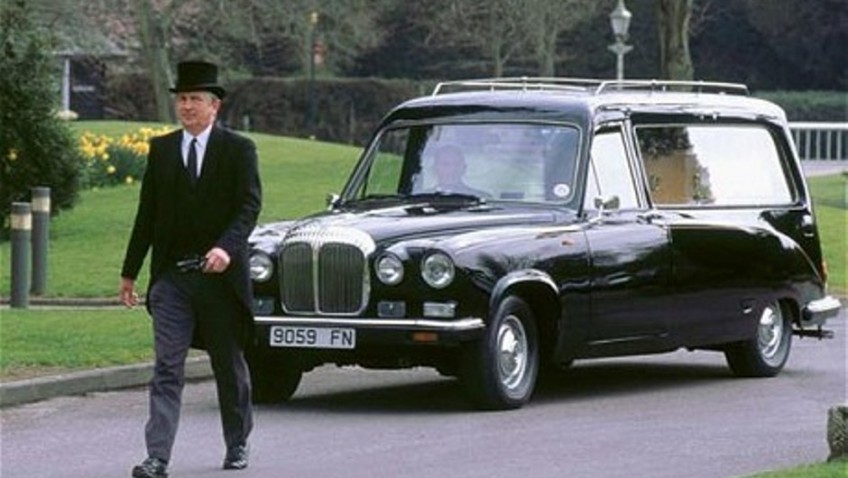Many social habits and customs have changed in recent decades, and with them some of the old certainties: funerals, for instance, are often far less formal affairs than they were. So what is the right etiquette at a funeral? Specialist advice website www.myageingparent.com has this advice.
Christenings, weddings, funerals: the big staging posts in our lives that help bring friends and families closer together… or unwittingly cause offence. Funerals, in particular, can be emotionally charged events; and whereas weddings and christenings tend to be stage managed well in advance, there is far less time for a family to tell everyone that a person has passed on, what the arrangements are, and even who will be welcome to come.
“When a family member or close friend passes away,” says www.myageingparent.com MD Deborah Stone, “it is an emotional and stressful period of time for everyone involved. When it comes to the deceased’s funeral, people often worry about what to wear and what will be involved – and certainly won’t want to bother the family by ringing up and asking. It can be particularly tricky because funerals, of course, embrace all generations – and what one generation would expect may be slightly at odds with another. Added to that, it has become far more complicated in recent years because not every family will want it to be a sombre affair – but perhaps a celebration of someone’s life. We have had many, many queries from our readers on this – and created a guide to some of the most common queries that people have about funerals and funeral etiquette.”
So what are the eight most asked questions about funerals?
1 Who can go to a funeral?
Unless a family specifically asks for a private service, you don’t have to be invited. So if you knew the deceased, you can attend the service. However, in the case of a private service, you will have to attend the grave or the cremation memorial at another time to say your goodbyes. Often, there will be a smaller family service (perhaps including the cremation or burial) followed by an open service where anyone may attend.
2 Are children allowed to go to a funeral?
The short answer is yes, although it is always best if they know what to expect and are emotionally prepared – it can be very uncomfortable for a youngster to see adults upset or to see a coffin. Very young children can get fidgety and disruptive if the service is long, so unless the family has explicitly said they are happy for them to be there, it may be better to ask someone to look after them when you go.
3 What should I wear?
Traditionally, of course, families and friends would wear black outfits, but in recent years this trend has begun to change. Nowadays, men will often wear a dark suit with a (usually) black tie, whilst women generally wear smart dresses.
Guidance can often come from whoever is organising the funeral: it is not unheard for a family to suggest colourful clothing to celebrate someone’s life, especially at memorial services. But unless they have specifically said this, it’s best to assume “dark and smart”. Churches and cemeteries can be very cold places during the winter months, so wrap up warmly.
4 What should I say?
Speaking to the chief mourners either before or after the funeral is the polite thing to do, as long as they are not finding it difficult to talk. If you are unsure of what to say, then simply express your deepest sympathy and say a few words about how you knew the departed and say a few kind words about them.
If you have been asked to say a few words at the service, then it’s best to share your important or happy memories of the deceased and say why they were so loved.
5 Where should I sit during the service?
These are always difficult things to judge: on the one hand, the front part of the church or crematorium should be left for family and close friends. On the other, if you sit at the back and have hearing problems you may not be able to hear the readings. If you are not a close relative, then it is best to try and sit in the middle or back of the church
6 What follows the service?
Once the service has finished, everyone will follow the minister and chief mourners out of the church or crematorium chapel. At church ceremonies, family members and friends will walk down with the coffin to its grave where the vicar or priest will speak as the coffin is lowered into its final resting place. Family and friends may lay some flowers down and say their last goodbyes once the minister has finished speaking.
At a service in a crematorium chapel, the coffin will usually remain on view until a curtain is pulled in front of it. The flowers from mourners will often be displayed in a special area.
7 Should I send flowers?
If you are a close friend to the deceased, sending flowers is a traditional way to show your sympathy and the family will really appreciate it. These can be sent to the church, to the home of the departed person’s family or sometimes direct to the funeral director. A little card with a short, personal message should go with the flowers. If the families ask for donations to be made to charity instead of flowers then you should follow their request. Some religions, such as Judaism, do not have flowers at funerals, so it’ss best to check with the family or other close friends before sending any.
8 What should I do if I am asked to be a pallbearer?
Being asked to be a pallbearer is a great honour and should always be accepted unless you have a special reason why you cannot. Pallbearers should ideally get to the church or crematorium at least half an hour before the service begins, so that the funeral director can talk you through what you will be doing.
“For many of us, of course, the part that really brings everyone together is the ‘wake’ or gathering afterwards,” says Deborah Stone. “The order of service should tell you whether everyone is welcome. And these are traditionally the times where – over a drink or two – family and friends can remember the person they have lost and celebrate the happiness they brought.”
The full guide can be found on here




